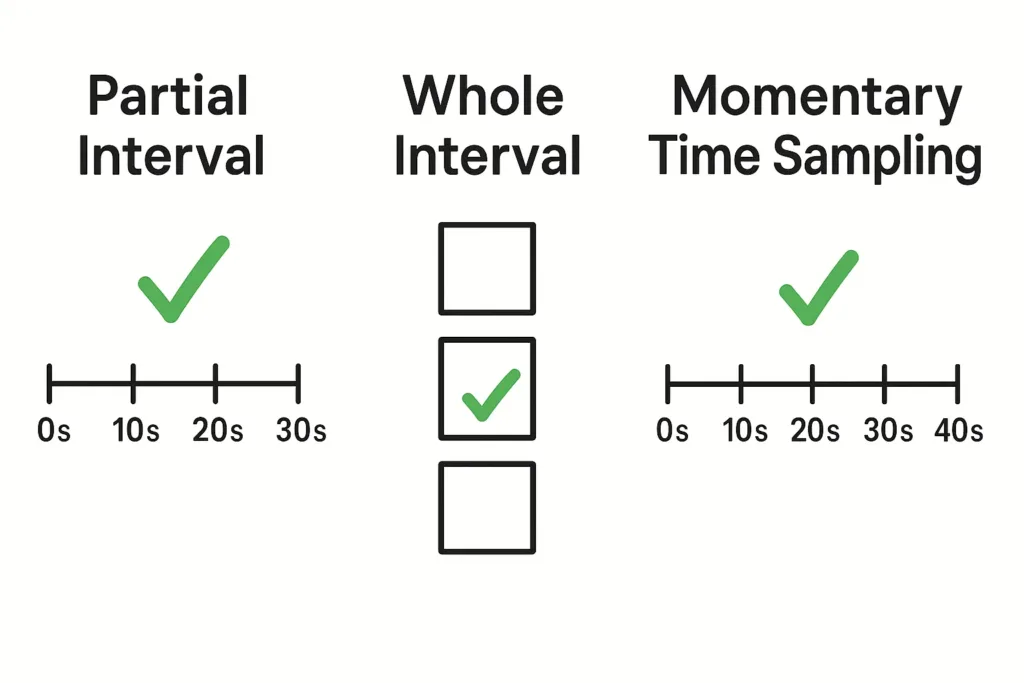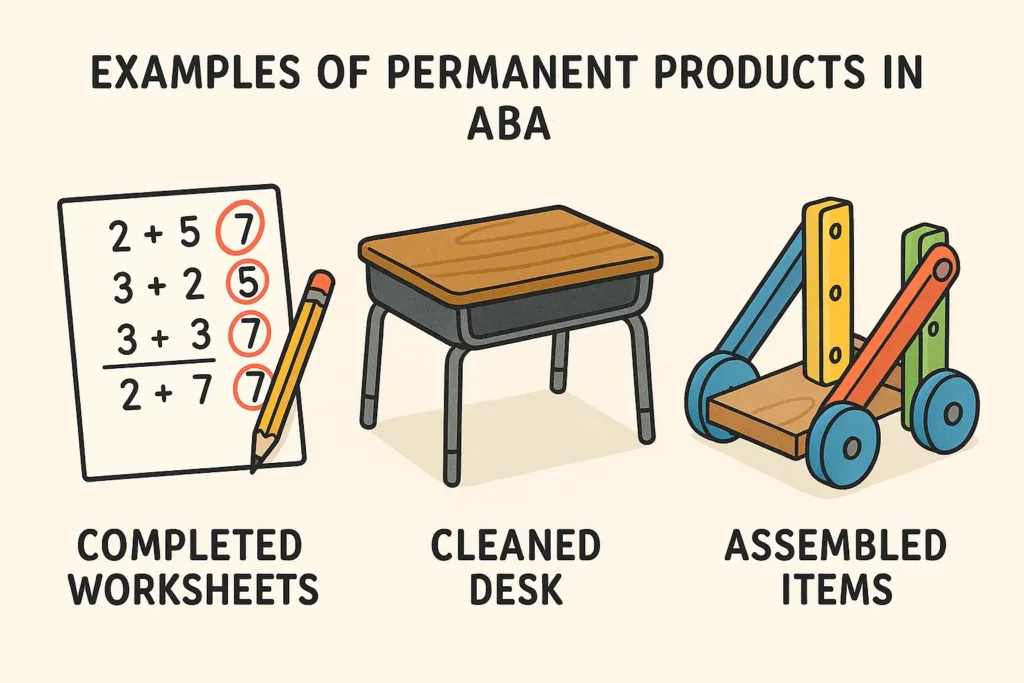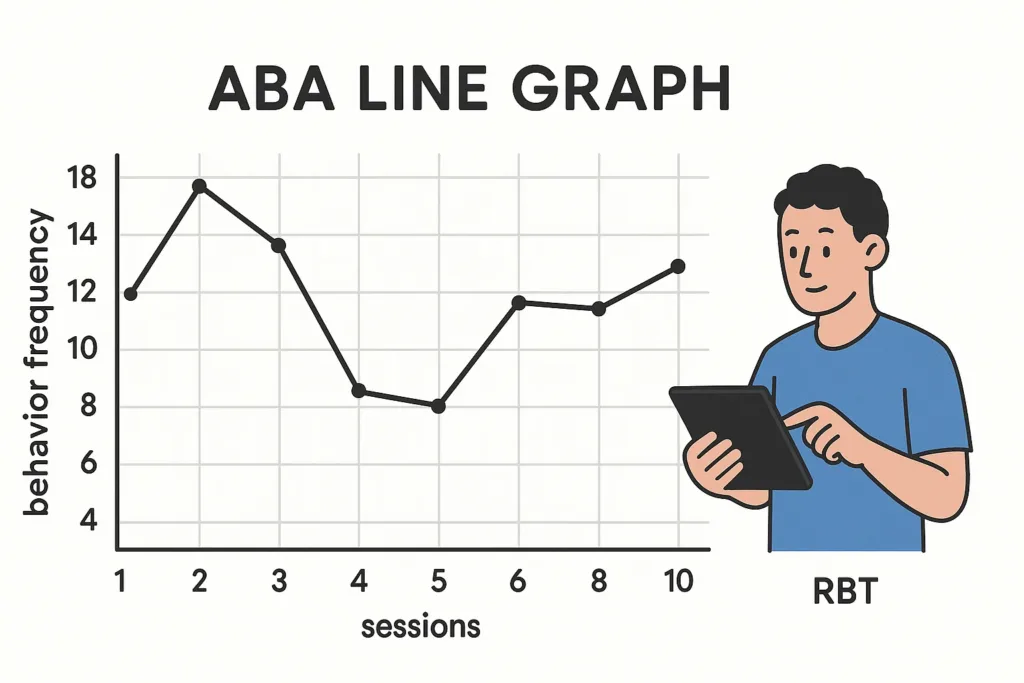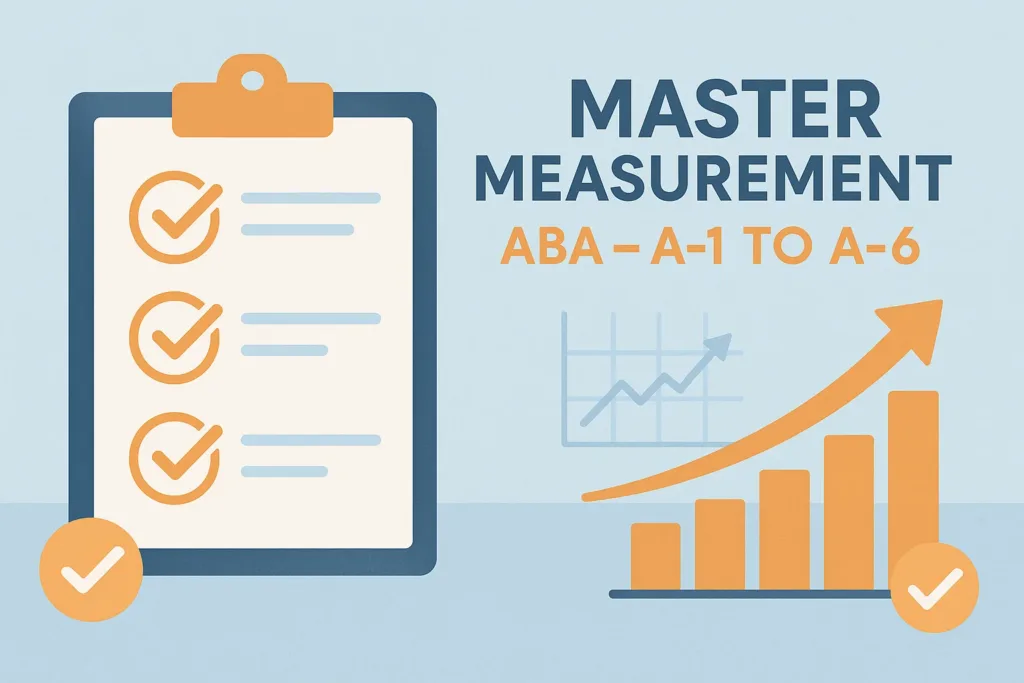Measurement ABA – RBT Task List Domain A | Free RBT Study Guide
Measurement ABA is the backbone of behavior analysis. In applied behavior analysis (ABA), we don’t guess or estimate progress — we measure it. This module walks you through A-1 to A-6, the essential building blocks of measurement in ABA. For Registered Behavior Technicians (RBTs), having a strong grasp of Measurement ABA principles ensures that data collection is objective, reliable, and meaningful. Whether you’re tracking a client’s social interactions, frequency of tantrums, or time spent on task, the quality of your data directly impacts the success of treatment.
Domain A of the RBT Task List focuses entirely on measurement. It covers how to prepare for data collection, implement various methods of recording behavior, and accurately describe what’s being observed. These tasks are foundational for every RBT, regardless of the setting — from clinics to classrooms to in-home services. Understanding A-1 to A-6 is critical for effective ABA data collection, ensuring that supervisors can analyze trends and make evidence-based decisions. Each sub-task builds a crucial part of the Measurement ABA foundation that every RBT must master for accurate and ethical data collection

Table of Contents
A-1: Prepare for Data Collection
Before any session begins, RBTs must be fully prepared to record behavior accurately. This involves reviewing the client’s behavior intervention plan (BIP), confirming the operational definitions for target behaviors, and ensuring that all necessary materials — such as data sheets, timers, clickers, or digital apps — are ready and functioning. Preparation also includes understanding what specific data is required that day and how it aligns with the overall treatment goals. These six tasks are part of Domain A in the RBT Task List, outlining foundational measurement responsibilities every RBT must perform.
Let’s consider a real-world scenario. Suppose you’re working with a 7-year-old client with autism who is learning to request help instead of engaging in aggression. Before the session, you check the BIP and see that the behavior analyst has outlined the use of a frequency count for aggression and a partial interval recording for appropriate communication. You print your data sheets, test your timer, and confirm the reinforcement schedule. This preparation ensures you are aligned with treatment protocols and ready to capture meaningful data.
Being prepared helps minimize human error, reduces interruptions during the session, and demonstrates professional responsibility. It also increases the accuracy and reliability of the data, which is essential for any Registered Behavior Technician working in a data-driven field like ABA. Supervisors rely on RBTs to not just collect data, but to collect the right data — and that begins with preparation.
A-2: Implement Continuous Measurement Procedures

Continuous measurement involves tracking every instance of a target behavior during an observation period. These methods support accurate and consistent ABA data collection for high-frequency behaviors. It includes several key techniques:
- Frequency – How many times a behavior occurs (e.g., client screams 6 times in a 30-minute session)
- Duration – How long the behavior lasts (e.g., tantrum lasts 3 minutes)
- Latency – Time between instruction and initiation of behavior (e.g., 4 seconds between “line up” and client beginning to walk)
- Interresponse Time (IRT) – Time between two consecutive occurrences of behavior
These methods are especially useful when behaviors are observable, have a clear beginning and end, and occur at a manageable rate for recording. For example, if you’re working with a teenage client who engages in repeated self-talk, you might use frequency to track how many times the behavior occurs during a session.
Let’s imagine you’re teaching a child with developmental delays to say “more” when requesting snacks. You use frequency recording to track each verbal attempt. As the client begins to say “mo” instead of using gestures, your data shows a steady increase in attempts across days. This allows the supervisor to adjust prompts and reinforcement strategies confidently.
Continuous Measurement ABA procedures are ideal for high-frequency behaviors and for capturing progress over time. It forms the basis of trend analysis, shaping decisions about intervention adjustments, and justifying continued services — all critical outcomes in RBT exam preparation and daily practice.
A-3: Implement Discontinuous Measurement Procedures

Unlike continuous measurement, discontinuous measurement involves observing whether a behavior occurred or did not occur during specific time intervals. This method provides an estimate of behavior rather than capturing every instance and is particularly helpful when continuous tracking is too demanding.
Discontinuous measurement includes:
- Partial Interval Recording – Marking whether the behavior occurred at any point during the interval
- Whole Interval Recording – Marking whether the behavior occurred for the entire interval
- Momentary Time Sampling – Marking whether the behavior is occurring at the end of the interval
For example, if you’re working with a 10-year-old who struggles with staying seated during class, you might use whole interval recording across 5-minute blocks to measure engagement. If the student remains seated for the full 5 minutes, you mark it as a successful interval. If they stand up even once, it’s marked as a no.
Now imagine you’re supporting a preschooler during playtime and using momentary time sampling to monitor whether they’re engaging appropriately with peers. Every 30 seconds, you glance over and mark whether the target behavior is occurring at that moment. This method reduces the recording demand on the RBT while still capturing meaningful patterns.
Discontinuous measurement is ideal when you need to manage multiple behaviors or clients and can’t observe continuously. However, it’s important to recognize the limitations — these methods may overestimate or underestimate actual behavior rates. That’s why it’s vital for RBTs to be trained in when and how to use these procedures effectively.
While less precise than continuous methods, these techniques are still integral to the Measurement ABA skill set every RBT needs.
A-4: Implement Permanent Product Recording Procedures

Permanent product recording is a highly practical method in ABA that involves measuring the outcome of a behavior, rather than the behavior itself. It’s especially useful when direct observation isn’t possible or necessary. Instead of watching a client engage in the behavior, RBTs evaluate the result left behind — the “product” — which serves as evidence that the behavior occurred.
Examples include:
- Number of completed homework problems
- Amount of trash picked up in a job site cleanup task
- Worksheets turned in after an academic session
- Number of emails sent as part of a vocational training program
Let’s say you work with a teenager with autism who is learning to complete vocational tasks in a school-to-work transition program. One of their goals is assembling packets. You don’t need to watch every step. At the end of the session, you simply count how many complete, correctly assembled packets are on the table. That count is your permanent product.
Permanent product recording has several benefits:
- It allows flexible data collection (you don’t need to be present while the behavior occurs)
- It provides physical proof of task completion
- It reduces observer bias
That said, RBTs must ensure that the product being measured is a valid representation of the behavior. For example, if a worksheet is filled out but mostly incorrect, the presence of a product (a completed worksheet) may not accurately reflect the target skill (correct answers). That’s why clear criteria and operational definitions are essential.
For RBTs, knowing when to use permanent product recording versus direct observation is key. It’s a time-saving, efficient strategy that aligns with real-world demands and promotes independence for clients.
A-5: Enter Data and Update Graphs

Once a session is complete, RBTs must accurately enter the data they’ve collected and update any visual graphs that represent the client’s behavioral progress. Data entry may happen in digital platforms (like Catalyst, CentralReach, or Excel) or on paper sheets, depending on the setting. Regardless of the format, accuracy is non-negotiable. As a Registered Behavior Technician, you’ll often be responsible for maintaining visual progress charts under your supervisor’s direction. Proper ABA data collection ensures that graphs reflect client progress objectively.
Graphs are essential in ABA because they provide an immediate, visual summary of how behavior is changing over time. These visuals help supervisors evaluate treatment effectiveness, identify trends, and make decisions about adjusting intervention strategies.
Let’s say you’ve been tracking the duration of tantrums for a 5-year-old client across multiple sessions. After each session, you input the exact minutes into the digital system, which generates a line graph. Over time, you and your supervisor can clearly see whether tantrums are increasing, decreasing, or staying consistent. Graphs are a core visualization tool in Measurement ABA, making it easier for teams to interpret data quickly and effectively.
Best practices for RBTs when entering data and updating graphs:
- Double-check numbers before submitting
- Ensure time stamps and dates are correct
- Enter data immediately after the session to avoid errors
- Review existing trends and prepare to discuss them with your supervisor
Inaccurate or delayed data can lead to poor clinical decisions. As a Registered Behavior Technician, your ability to enter clean, reliable data and maintain up-to-date visuals reflects your professionalism and supports ethical treatment. Measurement tools are essential for tracking teaching programs — learn more in our Skill Acquisition module (C-1 to C-12).
A-6: Describe Behavior and Environment in Observable and Measurable Terms
Perhaps the most essential communication skill an RBT must master is the ability to describe behavior in objective, observable, and measurable terms. This means avoiding vague language like “he was being difficult” or “she was upset” and instead describing exactly what was seen or heard.
For example:
- ❌ “Client had a meltdown”
- ✅ “Client dropped to the floor, cried loudly for 3 minutes, and threw a toy across the room”
This level of clarity removes interpretation and allows others (like supervisors or insurance reviewers) to understand what actually happened. The same rule applies when describing environments. Instead of saying “the room was distracting,” say “the room had music playing and three children talking loudly.”
Here’s a real-world application: You’re writing session notes about a 4-year-old client. You avoid stating, “The child was frustrated.” Instead, you write, “When asked to clean up, the client screamed, ran away from the table, and covered their ears for 30 seconds.” Clear, objective language allows any Registered Behavior Technician to describe behavior in a consistent, observable way.
Observable and measurable language:
- Increases reliability between staff members
- Helps ensure consistency in treatment
- Protects against legal or ethical disputes
- Improves the accuracy of progress reports
This sub-task is also heavily emphasized in the RBT exam preparation process, as it’s a fundamental principle of behavior analysis and ethical practice. Measurement is the foundation of effective client evaluation — see how it’s applied in the Assessment module (B-1 to B-3).
Conclusion: Why Mastery of Measurement Matters

The Measurement ABA domain (A-1 to A-6) is the foundation of everything RBTs do. Understanding how to implement each measurement type as outlined in the RBT Task List ensures consistency and accuracy in applied settings. Without reliable data, behavior analysts can’t design effective interventions, monitor progress, or make data-driven decisions. As an RBT, you are the front-line collector of that data — and your accuracy directly impacts your clients’ success.
By mastering continuous and discontinuous recording, understanding when to use permanent products, and entering and describing data with precision, you uphold the core values of ABA: objectivity, consistency, and evidence-based practice. Mastering the skills in A-1 to A-6 is the first step toward becoming an effective and reliable RBT.
For new or aspiring RBTs, this module isn’t just something to memorize for the exam — it’s a daily part of professional life. Make sure you revisit these concepts often, ask for feedback, and practice them across various clients and settings.
Want to test your understanding of Measurement tasks? Take our Measurement Practice Test (A-1 to A-6) and reinforce what you’ve learned.
